Latest: Coronavirus in Spain figures (21 May)
Please support Spain in English with a donation.
Report below updated in Spain at 16.30h on Saturday 2 May.
#LATEST – Spanish Prime Minister Pedro Sánchez has announced new measures to be introduced from Monday 4 May, as part of Phase Zero of the de-escalation of lockdown restrictions in Spain (see below for a summary of all phases).
Firstly, from Monday 4 May, it will be compulsory to wear face masks on all public transport in Spain.
Sánchez said that 6m face masks would be distributed at public transport hubs, 7m by Spanish municipalities and 1.5m by social organisations.
Sánchez said that the ‘state of alarm’ lockdown in Spain ‘has worked’ and ‘continues to be necessary’. He said that next Wednesday 6 May his government will be requesting a further official extension of 15 days to the lockdown in the Spanish Congress, until 25 May. The lockdown has been extended for two week periods at a time since it started on 14 March. The current lockdown is in place until 9 May (also see below for ‘lockdown in Spain to date’).
Also from Monday 4 May, restaurants and cafés in Spain will be allowed to open only for people to collect food, or for a takeaway delivery service.
Businesses such as bookshops, hardware shops, hairdressers and ‘workshops’ will also be able to open, but for visits by appointments only. Only one customer can be served by one employee at a time.
Preference hours at these establishments will be given to people aged over 65 in Spain, during the hours that coincide with their permitted hours to take walks (see below). There will be restrictions on how many people can access the establishments at any one time.
Sánchez has also announced that some further restrictions on professional sport will be lifted from Monday 4 May. Individual training sessions will be allowed without time limits. Players in professional leagues will be able to train individually at their clubs.
With regards the lifting of restrictions that allowed children to take walks from 26 April, and for adults to also take walks and exercise from today, Saturday 2 May, Sánchez said that, ‘these are small comforts that are coming in doses, and may appear insufficient, but are important’. He said that mobility across Spain would recover ‘bit by bit’, but stressed that social responsibility would be a key factor in the de-escalation of restrictions.
With regards the statistics released today now showing more than 25,000 Coronavirus-related deaths in Spain (see figures below), the Spanish prime minister said that the ‘pain continues to be unbearable’.
As previously announced (see below), Sánchez also confirmed that from Monday Formentera in the Balearic Islands, as well as La Gomera, El Hierro and La Graciosa in the Canary Islands, will go straight to Phase One in the de-escalation of the lockdown plan. Markets, libraries, restaurants and bars with terraces will be allowed to open on these islands, but with restrictions on capacity. Some outdoor cultural events will also be permitted, following the guidelines for Phase One (see below).
The Spanish prime minister also said that his government was responding to the requests from Spain’s regional governments, and that it was allocating a special fund of €16bn for the regions. From that total, €10bn would be to support healthcare, €1bn on social welfare and €5n to help the economic recovery.
Sánchez also said that to recover from the Coronavirus pandemic would require ‘unity’, a plan for the social and economic rebuilding of Spain, as well as support from the EU.
He said he was ‘convinced’ that until a vaccine is found, Spain ‘will have new outbreaks’. But he also said ‘that is why it is very important not to drop our guard’ so that any new upsurges ‘do not put stress on our national health system’.
Our daily Coronavirus in Spain reports include the latest statistics, regular updates on the phases to relax the lockdown, plus news on the impact on the Spanish economy. The reports are updated throughout the day. Please support us at Spain in English with a small donation. You can also sign up for our free newsletter here. Thanks for reading. Stay safe.
CORONAVIRUS in SPAIN – today’s figures
The latest official figures* released by Spain’s Health Ministry in Madrid at 11.15h on Saturday 2 May confirm that 25,100 people have now died from the pandemic in Spain, up by 276 on yesterday.
Friday had seen an increase of 281 Coronavirus-related deaths over Thursday. Thursday had been an increase of 268 over Wednesday – the lowest daily increase since 20 March. Wednesday had been 325.
The current peak of recorded deaths related to Coronavirus in a 24-hour period in Spain was on 2 April, when 950 deaths were registered.
The Health Ministry recently changed its criteria for the way the data of those infected with Coronavirus is presented. Figures released on Saturday 2 May show a total figure of those who have only tested positive through a PCR (polymerase chain reaction) test. That figure is 216,582– an increase of 1,147 over yesterday.
The current peak of recorded infections for a 24-hour period in Spain was on 31 March, when 9,222 new cases were registered (including from PCR and other testing).
117,248 people have now made a full recovery, an increase of 2,572.
With regards the official figures released by the central Health Ministry for each region of Spain, there have been discrepancies in the data released independently by some of those regions, particularly for Madrid and Catalonia. Please refer to *Health Ministry data and regional discrepancies below.
Of the official figures released by the ministry today – and based only on the total 216,582 confirmed cases through PCR testing – there are now 62,073 cases in the Madrid region and where 8,292 have died (from the total 25,100 across the country). There are now 49,850 cases in Catalonia and where 5,137 have died.
There are now 12,887 known cases in the Basque Country (1,321 deaths), 12,207 in Andalusia (1,253), 15,967 in Castilla La Mancha (2,534) and 10,411 in the Valencia region (1,258).
Figures for those infected with Coronavirus in other regions are now as follows: Aragón 5,136 (761 deaths), Asturias 2,303 (279 deaths), Balearic Islands 1,902 (197), Canary Islands 2,212 (140), Cantabria 2,201 (193), Castilla y León 17,165 (1,788), Ceuta 101 (4), Extremadura 2,824 (458), Galicia 8,902 (557), Melilla 115 (2), Murcia 1,491 (132), Navarra 4,888 (460) and La Rioja 3,947 (334).
A full breakdown in Spanish of the data per region, together with age group statistics can be found by clicking here. Please also see Health Ministry data and discrepancies below.
Sign up for the FREE Weekly Newsletter from Spain in English
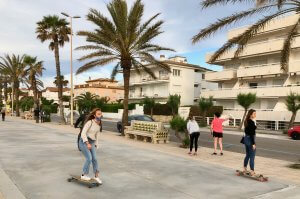
CORONAVIRUS in SPAIN – lifting of lockdown updates
Adults enjoying walks and exercise on Saturday
Adults in Spain have been allowed to go out for walks and exercise this Saturday after 48 days (7 weeks) in strict confinement during the ‘state of alarm’ lockdown.
Spain’s Health Minister Salvador Illa announced the new measures on Thursday evening. The full details are published in Spain’s Boletín Oficial de Estado (BOE).
This initial lifting of restrictions for adults is part of the government’s Phase Zero in the de-escalation of lockdown measures, officially starting from Monday 4 May. Full details of all four phases are below (updated regularly in these daily reports).
Today, Saturday 2 May, adults in Spain are now allowed out to take walks and exercise – although there are set time slots for when people can leave their homes in towns with over 5,000 residents.
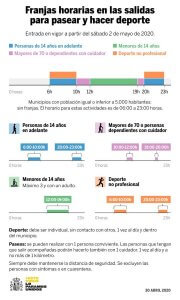
Walks
Officially, walks for adults should be taken between 6am-10am or between 8pm-11pm. Two adults are allowed to take walks together, once a day during those times – but with no maximum time set for the period of walking. Adults should not walk further than a one kilometre radius from where they live.
Adults who do not live together have been told to maintain social distancing (a minimum of two metres) with others they see whilst out walking. People must not congregate in groups, and the walks and exercise must be within their own municipality of residence. Adults must not drive to a location to then commence a walk.
Those needing assistance or to be accompanied during walks, as well as those aged over 70, are allowed to take their walks between 10am and 12 noon or between 7pm-8pm.
In towns with under 5,000 residents, people are now allowed to take walks and exercise between 6am and 11pm. There are around 7,000 towns and villages in Spain with less than 5,000 inhabitants, representing approximately 12% of the population.
Physical exercise
All kinds of sports (jogging, cycling, skating) are also allowed during the same time periods as walking, as long as they are practised ‘individually’. This means that no team or group sports are allowed – yet two people can jog or cycle alongside one another, maintaining social distancing.
The distance restrictions of one kilometre from home do not apply to individual exercise activities, as long as people remain within their municipality. Sports facilities and gyms remain closed. Most beaches remain closed in Spain, and water sports are still not permitted.
Physical activity ‘must be carried out in a continuous manner avoiding unnecessary stops on roads or in areas of public use’, it is stated in the BOE. If a stop must be made, it must be ‘strictly for the time necessary’.
Those people practising individual sports activities must also not drive to any location to start the activity.

Walks with children
Since last Sunday, children up to the age of 14 in Spain have been allowed to go out for daily walks and exercise, after 43 days of confinement. The rules for walks with children remain the same, except for the time slot permitted.
Up to three children are allowed to be out for up to one hour a day, officially accompanied by just one adult, and to walk no further than one kilometre from home. They are allowed to take bicycles, scooters and skateboards. Their walks were originally permitted between 9am-9pm but must now be between 12 noon and 7pm.
Officially, walks involving the whole family or with two parents or guardians at the same time are still not allowed. However on Friday, Fernando Simón, the director of the ‘Coordination Centre for Health Alerts and Emergencies’, said that it is ‘compatible’ that the same person who exercises or goes for a walk in the morning time slot, could also stroll with their children for an hour during the 12pm to 7pm slot.
Appeal for common sense
The Spanish Health Ministry has also appealed for the common sense of citizens. Health Minister Illa said that the continuing fall in Coronavirus infections will depend on how citizens behave from now on, and that people must take individual responsibility for observing the rules.
It is still not allowed to drive off for excursions, visit friends or relatives in other regions, or spend time at a second residence in Spain. This is expected to be gradually relaxed until during Phase One (see below).
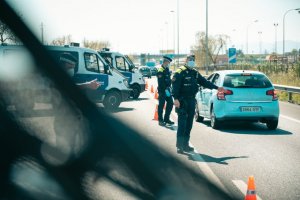
‘Four Phase’ plan – introduction
Spanish Prime Minister Pedro Sánchez announced his government’s ‘Plan for the Transition towards a new normality’ in a televised address last Tuesday. It is planned to take place in four phases.
Sánchez said that his government had been consulting with a team of experts in health and epidemiology, as well as on social, economic and international issues, in order to phase the gradual reduction of lockdown restrictions so that Spain can return to ‘a new normality’ by the end of June.
The Spanish prime minister said that the plan to relax the restrictions will be ‘gradual, flexible and adaptive’. The overall plan is that the de-escalation to ‘a new normality’ will officially commence on Monday 4 May and last eight weeks, until the end of June.
‘In the best-case scenario, this de-escalation phase will take a minimum of six weeks and the maximum duration we want to see is eight weeks for the whole of Spain,’ said Sánchez. ‘By the end of June, we as a country will have entered into the new normality if the epidemic remains under control.’
The four phase plan does not contain exact dates for the reopening of businesses, bars, hotels and restaurants – and the de-escalation measures will depend on the on-going progress across the different regions of Spain to combat the Coronavirus pandemic.
Each region of Spain will need to meet specific epidemiological criteria and the lifting of restrictions will also depend on the ability to maintain sufficient capacity in intensive care unit (ICU) facilities, in case there is a sudden increase of infections again. Each region also needs to have the ability to carry out PCR tests on all suspected cases, and then isolating them and testing all of their contacts.
The government’s plan is that each phase of the de-escalation will last for two weeks – yet starting with Phase Zero that will last for a ‘minimum of one week’.
Phase Zero will officially commence on Monday 4 May – although adults have now been allowed to take walks and exercise from Saturday.
Phase One will start from 10 May.
Phase Two and Phase Three will commence approximately at two week intervals thereafter, depending on the progress for each region.
The ‘new normality’ is expected from 25 June.
Schools will not reopen until September – but there could be ‘additional learning support’ provided beforehand.
The central government in Madrid, ‘in coordination with the regions’, will have the final decision on when each of Spain’s regions, provinces and islands can move towards each next phase. It means that the regions of Spain will move ‘at different speeds’. For example, Formentera in the Balearic Islands, as well as La Gomera, El Hierro and La Graciosa in the Canary Islands have already gone straight to Phase One
Below is a summary of the main measures that could be relaxed across Spain during each phase, subject to how each region, province and island manages with its progress in containing any further spread of the Coronavirus pandemic. We will be updating the information regularly within these daily reports, as soon as any changes or updates are officially announced.
The exact timing of the lifting of restrictions could differ for each region and province and people should check with local authorities for further information on what is permitted and when.
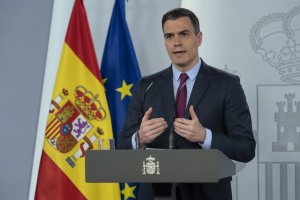
Phase Zero – from Monday 4 May
Phase Zero is the ‘preparation phase’ for the de-escalation – and is actually currently underway. It includes allowing children out for walks and exercise, and which started on Sunday 26 April. It now also includes adults being allowed out for walks and exercise from today (Saturday 2 May).
Sánchez also said on Tuesday evening during his televised address that further restrictions will be relaxed during Phase Zero from 4 May across all regions. This will include the reopening of certain businesses ‘by appointment’ only.
Many restaurants have started to reopen, but offering takeaway service only. Some regions are also allowing hair salons and beauty parlours to reopen by appointment only. Several establishments are already refitting their facilities to allow more ‘social distancing’ space.
From 4 May people involved in professional sports will also be allowed to participate in basic training.
The island of Formentera in the Balearic Islands, as well as La Gomera, El Hierro and La Graciosa in the Canary Islands, will have already gone straight to Phase One.
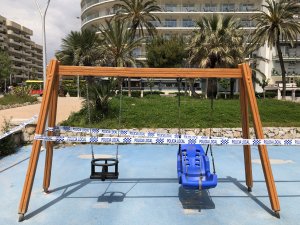
Phase One – from 10 May
Phase One will allow the ‘initial reopening’ of small businesses, with ‘security measures’ and social distancing in place.
Restaurant terraces could be allowed to open at 30% capacity.
Hotels could also be allowed to reopen at 30% capacity, except for communal areas that will remain closed.
There will be preferential time slots given to elderly people across Spain for the use of such establishments.
Some libraries will be allowed to reopen, with areas of reduced space and capacity. Selected museums could also reopen – again with reduced capacity and visits organised by appointment only.
During Phase One, it is planned that places of worship will also be allowed to reopen at 30% capacity.
Professional sports leagues could also allow teams to commence ‘medium training’.
Cultural acts could be permitted in certain regions, in closed venues with a maximum capacity of 30 people during this Phase One. Cultural acts could also be permitted in outside venues for up to 200 people – yet only if seated and with social distancing measures in place.
Rural tourism (possibly forest walks and trekking) could also be permitted during this period, depending on the region, yet only with organised and limited groups.
The reactivation of film and TV productions could also take place during this phase, subject to security and health measures being applied.
From 10 May during Phase One – and always depending on the progress against the pandemic in each area across Spain – journeys to second residences could also be allowed providing that they are in the same province. If they are in a different province, trips will not be allowed until towards the end of June.
During Phase One, citizens will also be allowed to meet with friends or family in their homes in the same province, but precise details of how many people can meet and under what conditions will be announced at a later date.
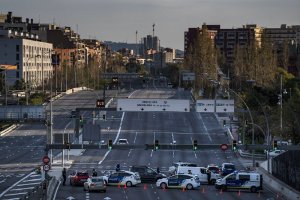
Phase Two – 2 weeks later
Pedro Sánchez referred to Phase Two as the ‘intermediate phase’. It would take place approximately from 26 May.
This phase would allow restaurants (those without terraces), theatres and cinemas to reopen but ‘with limitations’. Restaurants (inside), for example, will be allowed to reopen but only with a third of capacity, and with table service only. Cinemas and theatres will also be allowed to reopen only with a third of capacity.
Outdoor cultural events during Phase Two could be held with a maximum of 400 people – yet only if seated and with social distancing measures in place. Cultural gatherings indoors could be held with a maximum of 50 people.
Historic visitor attractions (not theme parks) and monuments could be allowed to reopen during this phase, yet only with a third capacity – and it is understood only with pre-arranged group or guided visits.
Rural tourism could also be further relaxed during this phase.
Whilst schools across Spain will officially not open again until September, Sánchez also said that from Phase Two of the easing of lockdown measures, some institutions might be able to open to host some face-to-face activities with students. Again, this will depend upon the progress of each region.
The activities could include ‘reinforcement lessons’, students sitting university entrance exams, as well as ensuring that children under the age of six can go to school if parents have to go to work and have no one to leave their children with.
Where students do attend schools during Phase Two, the groups will be limited to a maximum of 15 students.
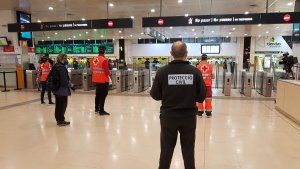
Phase Three – 2 weeks later
Phase Three is expected to commence from around 10 June.
This phase will see further measures relaxed before the ‘new normality’, as well as allowing more flexible and free movement across Spain and between regions. The use of face masks will remain recommended for all citizens.
All previous establishments above that had been allowed to open with a third capacity during the previous phases could now be able to increase to 50% capacity, depending on the overall progress in combating the pandemic.
Retail shops could also be allowed to start reopening at 50% capacity.
Outdoor cultural events could now be held with a maximum of 800 people – yet still only seated and with social distancing measures in place. Concert halls and other venues could be allowed to reopen, at a third capacity.
Rural tourism and coastal walks could be further relaxed.
Beaches could finally reopen during this phase (as well as hotel communal areas, such as swimming pools) depending on the region and province. It is expected that security, health and on-going social distancing measures will still be put in place.
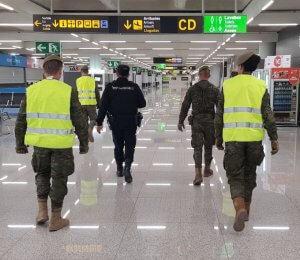
Lockdown in Spain to date
On Wednesday 22 April, Congress voted to extend the official ‘state of alarm’ lockdown in Spain until Saturday 9 May. The extension also came with the relaxation of some restrictions, specifically allowing children aged up to 14 the opportunity to take daily walks for an hour from Sunday 26 April.
Spain originally commenced its lockdown for two weeks from 14 March, with measures that confined everyone to their homes apart from leaving to purchase food or medication, or to go to their place of work only if they could not perform their duties from home. After one week, these initial measures were then extended until 12 April, then for a second time until 26 April – and then until 9 May.
During the overall lockdown period, from Monday 30 March until after Easter, further measures were introduced ordering all non-essential workers in Spain to also remain at home. Following the Easter break, industrial and construction workers, as well as non-essential employees in sectors where working from home wasn’t possible, started a gradual return to work.
With the relaxing of restrictions for children from Sunday 26 April – after 43 days confined at home – they were allowed out for an hour accompanied by a parent, guardian or elder sibling, to walk, run, cycle, scooter or play. Now from Saturday 2 May – after 48 days in confinement – adults across Spain have also been allowed out to walk and exercise during set time slots.
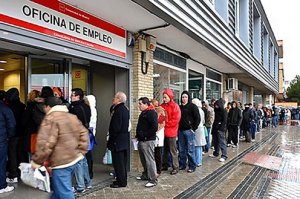
Impact on Spanish economy – latest
Spain’s GDP fell by 5.2% in the first quarter of 2020 compared to three months before.
According to figures released by Spain’s Statistics Agency (INE) on Thursday, the quarterly drop was of 4.1% on last year.
This is the biggest GDP decrease since 1970, the first year that INE records for this data wee available.
The drop in the first three months of 2020 is significantly more dramatic than any single quarter of the years after the 2008 financial crisis. The biggest fall during that period was the first quarter of 2009, when Spain’s GDP was 2.6% less than three months before.
In the first and second terms of 2009, the year-to-year GDP fall was of 4.2% and 4.3% respectively, slightly higher than the current 4.1%.
We are currently updating this report
Sign up for the FREE Weekly Newsletter from Spain in English
Please click to support Spain in English with a contribution
*Health Ministry data and regional discrepancies
The Spanish Health Ministry recently changed its criteria for presenting its Coronavirus (Covid-19) statistics each day, also due to some of Spain’s regions using different methods to collate their own figures.
In Catalonia, for example, the regional health department had only previously been counting figures for those who had died from Coronavirus in hospitals. This was then changed to include figures for those who had also died in nursing homes, social health centres or elderly residences, as well as at home.
Following discrepancies in the way that data has been collated, the Spanish government published an order in its Boletín Oficial del Estado (BOE) to clarify the criteria that must be used.
All regions must now report deaths and intensive care unit (ICU) admissions in the same way. A victim can only be counted in the death tally if they have tested positive for Covid-19 via a PCR (polymerase chain reaction testing) or rapid test.
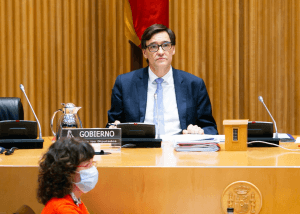
The Health Ministry has also requested that each region send in the total number of infections divided into symptomatic and asymptomatic cases. In addition, they also require the number of PCR tests carried out from each region, the total number of people that have required hospital treatment, including intensive care, as well as the number of patients who have been discharged.
Salvador Illa, the Spanish Health Minister, said that, ‘Spain is following a very strict definition of cases in line with international authorities, including the World Health Organization (WHO) and the European Centre for Disease Prevention and Control (ECDC). Anyone who tests positive for Covid-19 and then dies is considered a Coronavirus fatality’.
Sign up for the FREE Weekly Newsletter from Spain in English
Please click to support Spain in English with a contribution
Below are the numbers to call for each region of Spain for information and assistance in the event of possible cases of Coronavirus – as issued by the Spanish health authorities.
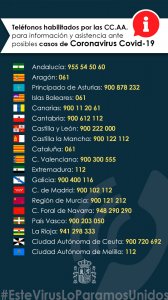
Up-to-date WHO advice and facts (in English) about the Coronavirus epidemic can be found here: www.who.int/emergencies/diseases/novel-coronavirus-2019/technical-guidance.
Our previous reports on Coronavirus in Spain:
ALSO READ: Coronavirus in Spain full update (1 May)
ALSO READ: Coronavirus in Spain full update (30 April)
ALSO READ: Coronavirus in Spain full update (29 April)
ALSO READ: Coronavirus in Spain full update (28 April)
ALSO READ: Coronavirus in Spain full update (27 April)
ALSO READ: Children enjoy first ‘hour of freedom’ in 43 days
ALSO READ: Opinion: why bullfights should stay cancelled after Covid-19
ALSO READ: Spain votes to extend lockdown to 9 May. Children to be allowed out
ALSO READ: Spanish government: children can go with adults to supermarkets, but not parks
ALSO READ: Pedro Sánchez seeks cross-party ‘Moncloa Pact’ for recovery programme
ALSO READ: Co-Vida: an inspiring community action project
ALSO READ: One day more, one day less
ALSO READ: ‘Up on the Roof’ – surviving lockdown from above
ALSO READ: Open Arms refugee NGO helping to combat Coronavirus
ALSO READ: When can La Liga restart?
ALSO READ: Lockdown in Spain set to be extended until 26 April
ALSO READ: Coronavirus in Spain: unemployment figures worst on record
ALSO READ: FC Barcelona players agree to 70% pay cut, and will ensure staff receive 100%
ALSO READ: Animal rights NGO starts petition against possible state aid for cancelled bullfights
ALSO READ: Spain publishes list of hotels that will remain open
ALSO READ: Video of boy training as goalkeeper in isolation goes viral
ALSO READ: The new restrictions at Spain’s airports, ports and land borders
ALSO READ: Madrid starts receiving patients at IFEMA exhibition centre ‘hospital’
ALSO READ: Walking a goat or a Vietnamese pig is not allowed
ALSO READ: Coronavirus in Spain – full advice for British travellers seeking to return to the UK
ALSO READ: ‘This virus we will stop together’ – video
ALSO READ: Despite lockdown, Spaniards applaud health workers from balconies every evening
Editor’s note:
At Spain in English we’re always keen to also publish positive stories and features about life in Spain – not just the current news. With all cultural and sporting events currently on hold, as well as travel and gastronomic excursions, we welcome on-going contributions from all of you who’d like to send us articles for publication. Although we are unable to currently pay for contributions, we will certainly credit you and share the articles across our social media network (if of interest) – and/or also link to your own blogs or other sites. We currently welcome upbeat, positive and fun articles – perhaps how you’re coping with the ‘lockdown’ in your own area of Spain – or how your community is responding, or recommendations of help to others. We have a dedicated ‘Opinion, Blogs & Spanish Experiences‘ section where your articles will appear. We will edit for clarity and length only – and we reserve the right to not publish. Articles should be sent via email to editorial@spainenglish.com(preferably with a photo and credit details), and should be around 500 words (800 to 1,000 max). We will try to respond to everyone, but please be patient with us. We’re a very small team but with big ambitions! Please stay safe. Thank you for reading and following us.
Sign up for the FREE Weekly Newsletter from Spain in English
Please click to support Spain in English with a contribution

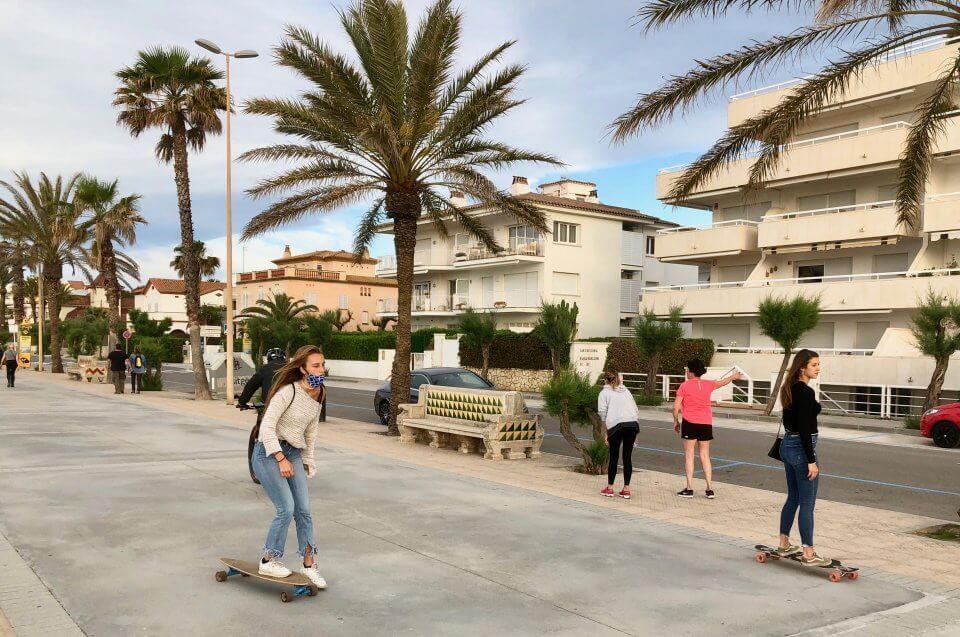

1 comment
Exellent information. Easy to understand and follow.